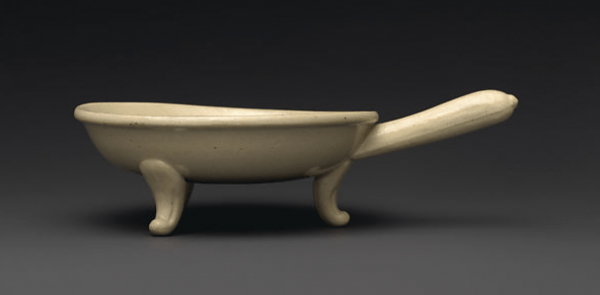
Rookwood Pottery is an American ceramics manufacturer located in Cincinnati, Ohio.
Background

Maria Longworth Nichols (1849-1932) attended the first China painting classes at the University of Cincinnati School of Design and Maria Eggers in 1874.
Competition between Maria Nichols and M. Louise McLaughlin occurred when the latter established the Cincinnati Pottery Club in 1879. Both worked for Frederick Dallas at his commercial pottery in Cincinnati and experimented with china painting.

Nichols established Rookwood Pottery in 1880, marking the culmination of the Cincinnati women’s art movement and the beginning of art pottery in the USA.
Nichols hired Joseph Bailey Jr. as superintendent in 1880 and Joseph Bailey Sr. in 1881. She was its artistic director.
From 1881 to 1883, she operated the Rookwood School for Pottery Decoration with instructors Clara Chipman Newton and Laura Frey.
China painters

China painters working at Rookwood included;
- Frey, Newton, and Lorinda Epply 1904-48,
- William Henschel 1907-39,
- Albert R. Valentien from 1881,
- Matthew A. Daly from 1884,
- William P. McDonald from 1884,
- Kataro Shirayamadani from 1887, and
- William Watts Taylor from 1883 as manager.
The pottery became a viable financial operation. It was turned over to Taylor in 1891.
Twentieth Century
Rookwood’s painters included Sara Sax in the 1910s and 1920s, Elizabeth F. McDermott, Edward T. Hurley from the 1900s to 1940s, and Charles J. McLaughlin in the 1910s.
Until the 1930s, Rookwood produced artistic ceramics and mass-production pieces in high-glaze and matt finishes.
The firm moved in 1960 to Starkville, Missouri, where a few pieces were produced until 1966.
In 1982, Arthur J. Townley of Michigan Center, Michigan, purchased the company’s remains and, in 1984, began to produce a limited range of ceramic novelties, including paperweights, advertising signs, and bookends with the original master moulds.
Recognition
- A full range of Rookwood pottery was shown at the 1893 Chicago ‘World’s Columbian Exposition.’
- Rookwood’s pieces by Valentien and Shirayamadani won a gold medal at the 1889 Paris ‘Exposition Universelle.’
- The firm won honours at the 1900 Paris ‘Exposition Universelle’ (grand prize),
- 1901 Buffalo ‘Pan-American Exposition’ (gold medal),
- 1902 Turin ‘Esposizione Internazionale d’Arte Decorativa Moderna’ ( diploma of honour),
- 1904 St. Louis ‘Louisiana Purchase Exposition’ (grand prize),
- 1907 Hampton Roads, Virginia, ‘Jamestown Tercentennial Exhibition’ (gold medal), and
- 1909 Seattle ‘Alaska-Yukon Pacific Exposition’ (grand prize).
William Watts Taylor was appointed Chevalier de la Legion d’honneur.
Sources
Byars, M., & Riley, T. (2004). The design encyclopedia. Laurence King Publishing.
More on Ceramic Art and Design
Related Articles
Discover more from Encyclopedia of Design
Subscribe to get the latest posts sent to your email.





